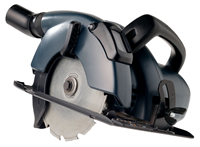Categories: Hearing loss, Prevention through Design
November 4th, 2011 2:29 pm ET -
Heidi Hudson, MPH, and Chuck Hayden, MS, PE
 We know that using tools and machinery that produce less noise will help prevent hearing loss among the workers who use them. The next step would seem obvious—buy quieter tools and machinery. Unfortunately, it’s not that simple. Making products quieter is a tough sell in industry. Currently, the availability of quieter tools and machines is limited and it’s not always clear to purchasers how much noise particular tools and machinery produce. NIOSH and its partners are working to change that through the creation of a Buy Quiet web tool.
We know that using tools and machinery that produce less noise will help prevent hearing loss among the workers who use them. The next step would seem obvious—buy quieter tools and machinery. Unfortunately, it’s not that simple. Making products quieter is a tough sell in industry. Currently, the availability of quieter tools and machines is limited and it’s not always clear to purchasers how much noise particular tools and machinery produce. NIOSH and its partners are working to change that through the creation of a Buy Quiet web tool.
This web tool will build on the process of “buy quiet”—the concept that employers can most effectively reduce hazardous noise levels at their worksites through their procurement process.
 17 Comments -
Read more
17 Comments -
Read more

Categories: Policy and programs, Prevention through Design
September 22nd, 2011 1:45 pm ET -
Donna S. Heidel, CIH
 The American Society of Safety Engineers (ASSE) recently announced the approval of the American National Standards Institute (ANSI)/ASSE standard, “Prevention through Design: Guidelines for Addressing Occupational Risks in Design and Redesign Processes” (Z590.3). This new standard provides guidance on including Prevention through Design concepts within an occupational safety and health management system, and can be applied in any occupational setting.
The American Society of Safety Engineers (ASSE) recently announced the approval of the American National Standards Institute (ANSI)/ASSE standard, “Prevention through Design: Guidelines for Addressing Occupational Risks in Design and Redesign Processes” (Z590.3). This new standard provides guidance on including Prevention through Design concepts within an occupational safety and health management system, and can be applied in any occupational setting.
The new standard focuses specifically on the avoidance, elimination, reduction and control of occupational safety and health hazards and risks in the design and redesign process. Through the application of the concepts presented in the standard, decisions about occupational hazards and risks can be incorporated into the process of design and redesign of work areas, tools, equipment, machinery, substances and work processes.
 14 Comments -
Read more
14 Comments -
Read more

Categories: Green, Prevention through Design
June 13th, 2011 1:35 pm ET -
Thomas Cunningham, PhD, and Garrett Burnett, MS, MBA
 Green is sexy. It’s in vogue. It gets splashed on billboards and endorsed by celebrities. Safety on the other hand? Not so much. Over the past few years, the environmental movement has picked up steam and seeped into the national consciousness. Heck, even school kids can tell you what it means to be green—and they’ll probably even throw in that it’s cool, to boot. Occupational safety has remained a niche topic, the domain of industrial hygienists, regulators, and technical experts. The only school kids discussing it are working on advanced degrees. Let’s face it: Jack Johnson hasn’t written any songs about worker safety and health.
Green is sexy. It’s in vogue. It gets splashed on billboards and endorsed by celebrities. Safety on the other hand? Not so much. Over the past few years, the environmental movement has picked up steam and seeped into the national consciousness. Heck, even school kids can tell you what it means to be green—and they’ll probably even throw in that it’s cool, to boot. Occupational safety has remained a niche topic, the domain of industrial hygienists, regulators, and technical experts. The only school kids discussing it are working on advanced degrees. Let’s face it: Jack Johnson hasn’t written any songs about worker safety and health.
Green and safety are both related to behavior changes that take place at national, organizational, and personal levels. They share an impetus for action. Categorically, the motivations that move nations, organizations, and people to behave in environmentally friendly ways are the same as those that encourage safe work practices.
 36 Comments -
Read more
36 Comments -
Read more

Categories: Prevention through Design
June 2nd, 2008 10:15 am ET -
Administrator
 One of the best ways to prevent and control occupational injuries, illnesses, and fatalities is to “design out” or minimize hazards and risks early in the design process. The National Institute for Occupational Safety and Health (NIOSH) is leading a National initiative called Prevention through Design (PtD) to promote this concept and highlight its importance in all business decisions. PtD addresses occupational safety and health needs by eliminating hazards and controlling risks to workers throughout the life cycle of work premises, tools, equipment, machinery, substances, and work methods, including their construction, manufacture, use, maintenance and ultimate disposal or re-use.
One of the best ways to prevent and control occupational injuries, illnesses, and fatalities is to “design out” or minimize hazards and risks early in the design process. The National Institute for Occupational Safety and Health (NIOSH) is leading a National initiative called Prevention through Design (PtD) to promote this concept and highlight its importance in all business decisions. PtD addresses occupational safety and health needs by eliminating hazards and controlling risks to workers throughout the life cycle of work premises, tools, equipment, machinery, substances, and work methods, including their construction, manufacture, use, maintenance and ultimate disposal or re-use.
 16 Comments - Read more
16 Comments - Read more

 We know that using tools and machinery that produce less noise will help prevent hearing loss among the workers who use them. The next step would seem obvious—buy quieter tools and machinery. Unfortunately, it’s not that simple. Making products quieter is a tough sell in industry. Currently, the availability of quieter tools and machines is limited and it’s not always clear to purchasers how much noise particular tools and machinery produce. NIOSH and its partners are working to change that through the creation of a Buy Quiet web tool.
We know that using tools and machinery that produce less noise will help prevent hearing loss among the workers who use them. The next step would seem obvious—buy quieter tools and machinery. Unfortunately, it’s not that simple. Making products quieter is a tough sell in industry. Currently, the availability of quieter tools and machines is limited and it’s not always clear to purchasers how much noise particular tools and machinery produce. NIOSH and its partners are working to change that through the creation of a Buy Quiet web tool.



